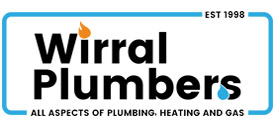If your boiler is over 15 years old there is a good chance that is is a non-condensing boiler. These are very inefficient compared to modern boilers. Most new boilers are condensing boilers, they make better use of the heat they generate from burning fuels. In the UK when new boilers are installed, fitting a condensing boiler is the norm to meet the current legislative requirements for boiler efficiency. In this blog post we are going to address the key differences between a non-condensing and a condensing boiler.
Non-Condensing Boiler
A non-condensing boiler has a single heat exchanger chamber, where the hot gases from the burner, pass through to heat the water within the walls of that exchanger, before reaching the exit flue.
Condensing Boiler
A condensing boiler operates in the same manner as a non-condensing boiler; having a single heat exchanger chamber where hot gases from the burner heat the water. However, before the hot gases reach the exit flue, they go through a secondary stainless steel heat exchanger.
The secondary stainless steel heat exchanger is the main difference between condensing and non-condensing boilers. This secondary heat exchanger lengthens the heat transfer time by increasing the surface area for good heat transfer of gases & water. The result of this is, it can give an increase in efficiency up to perhaps an average of 92%. A condensing boiler captures what would be wasted heat in a condensing boiler. By using the heat in the flue gas to preheat the cold water running into the boiler, boosting the efficiency of the boiler.
Why is a condensing boiler a better choice?
It is better for the environment by reducing CO2 emissions and carbon footprint
- More energy efficient
- Lower energy usage
- Reduces energy bills
Get In Touch
Don’t hesitate to contact Wirral Plumbers to discuss your plumbing, heating engineering or boiler requirements. We provide for a free, no obligation, quotes. You can call us on 0758 0359 493 or email mike@wirralplumbers.com. We install new boilers in Wirral and across the surrounding areas.








